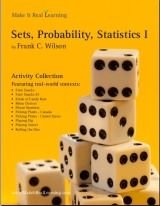Last year I reviewed Math Mammoth. For that review, I received Level 1 from the Light Blue Series. Light Blue is the series designed to be a complete math curriculum divided by grade level. I liked the curriculum so much, that I have continued to use it with my younger son. He is actually just now finishing with level 1 and is ready to start level 2, which I just happened to receive to review this year. (I had hoped to start it before the review was due, but you can’t rush a kid through math!)
As I sat down to write this review, I realized that I didn’t have that much to add about Math Mammoth that I didn’t already say in last year’s review. I still love the program because it teaches math so that the student understands the concepts. It provides adequate drill in the worktext, plus contains suggestions for on-line games to provide extra practice if needed. I love the emphasis on word problems in Math Mammoth. I still think it is a terrific value, since the texts are e-texts and can be re-used for your younger children. (At $29.70 for a whole year’s curriculum, it’s a good value even if you don’t use it for multiple children.) So, if you want to read more about what a wonderful program Math Mammoth is, read last year’s review.
 But Math Mammoth has added something new since last year’s review. They are offering an additional series called Make It Real Learning (MIRL). MIRL modules are sets of real life problems about different mathematical topics. I requested a review copy of the Sets, Probability and Statistics problem set.
But Math Mammoth has added something new since last year’s review. They are offering an additional series called Make It Real Learning (MIRL). MIRL modules are sets of real life problems about different mathematical topics. I requested a review copy of the Sets, Probability and Statistics problem set.
The first thing I noticed was MIRL does not contain instruction. It has problem sets and the corresponding solutions. (They are very thorough solutions, not just answers.) To introduce new topics, you need to use another resource. Or if you’re very knowledgeable at math, you could look at the solutions and teach the concepts from that. But I found that I needed a little refresher on the formulas for finding permutations and combinations, so I had to do a little studying.
I used the module, which contains 10 problem sets, with my 6th grade son. We worked one problem set a day together. We have never had so much fun doing math. We have actually struggled with math over the years. Not because my son isn’t good at math, but because he is very resistant to showing his work. I’m still unsure how best to handle that, but it was nice to do math together for 2 weeks with no complaining and arguing from my son. (or me!)
The problems were interesting. We discovered the total number of possible license tags for several different Canadian provinces. We calculated different permutations of telephone numbers. We found the probability of a soccer player starting the game at a specific position. We calculated the number of possible different orders a family could make from a restaurant value meal. The problems were meaningful and challenging. They definitely helped my son to apply the concepts. Later he was using what he had learned to calculate the number of marble races he would need to run in the marble run to ensure that every marble raced against every other marble. I love it when my kids use what they are learning in school in their free time!
I really can’t recommend MIRL highly enough. There are 11 different modules with difficulty ranging from Arithmetic to Calculus. Most of them are for the more advanced math topics. Each set is available for $4.99, or you can purchase all 11 sets for $39.99. There are samples to download so you can see what you think before purchasing. I can’t wait to try more of these! To order MIRL, you can visit this page on the Math Mammoth website.
Linked to: The Homeschool Curriculum Review Roundup.
Disclosure: This product was provided to our family for free as members of the 2009-2010 Old Schoolhouse Magazine Homeschool Crew. Reviews and opinions expressed in this blog are our own.

By Kristen H.

